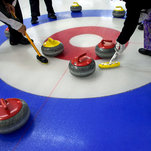It was an odd mixture of country crooners, rappers and punk revivalists who worked their way to the top of the Billboard charts in 1991. Garth Brooks, Hammer and Nirvana would appear to have little in common, except for the fact that their success coincided with the use of a new computerized system developed by Soundscan, a Westchester company that supplies its findings to Billboard magazine. "The new chart shows that there are more and different kinds of artists finding and holding an audience than ever before," says Timothy White, editor-in-chief of Billboard. "The old chart couldn't begin to touch the democracy of this chart."
Soundscan represents a source of hard data in an industry that has demonstrated a preference for hype. What Soundscan does is eliminate the influence of record store clerks and managers who, under the old system, were simply asked: "What's selling?"
"There's no question," says Mr. White, "that our old system was subject to manipulation and that people abused it. Store reporters could be bribed with clock radios and all sorts of amenities and favors." (Billboard dropped stores if improprieties were found.)
There was some record industry resistance to Soundscan when it appeared about a year ago. Observers say that was because the record labels had learned how to "work" the old system, influencing which acts were reported to Billboard to get additional radio airplay and attention. The old Billboard charts also offered a narrower definition of popular music because store clerks often failed to report music like country or rap, which they perhaps didn't perceive as pop.
Billboard had initially planned its own computerized information-gathering system. When that failed to materialize quickly, Michael J. Shalett and Michael Fine jumped in with Soundscan, which sells its information services primarily to Billboard and record companies. Soundscan pays stores for exclusive access to their information.
Today, Soundscan measures more than 60 percent of all record, tape, CD and music video sales and returns in the United States. Every musical genre -- on both albums and singles -- is tracked. (Billboard has elected to use Soundscan for only some charts; its rhythm-and-blues chart, for instance, is compiled under the old system.) Soundscan, unlike the old system, also reveals whether the difference between a No. 2 and a No. 3 album is 100 records or 100,000 records. "Soundscan puts a great burden on other, more subjective record charts," says Robert J. Smith, marketing chief at Geffen and DGC Records. "I'm reluctant to admit it, but very soon we will not be able to live without it."
The new system has its flaws, however. "We're finding that the Northeast is not properly reflected in their numbers and that the Southeast is overrepresented," says Henry Droz, president of the Warner-Elektra-Atlantic Corporation. Garth Brooks's strong showing on the Soundscan-Billboard charts last year could be one result. Others say that the system relies too much on the record distributors who supply the blockbuster albums to chain stores, and not enough on the trend-setting independent stores.
Mr. Shalett admits that the system can be manipulated: if records are sold far below cost, the sales still turn up in Soundscan's data. And, says Russell Solomon, the president of Tower Records, which has been reluctant to join the Soundscan system, "I can just imagine what some computer hacker could do. With $30, $40, $50 million riding on some records, I'm sure someone is bound to try to crack the system."
In response to criticism, Soundscan is trying to beef up the number of stores that report on the East and West Coasts and to establish a separate reporting group of 500 independent record stores. Tower Records has committed only 6 of its 69 stores, and none in New York. Mr. Solomon says that his stores are not equipped with the necessary bar-code scanners. Beyond that, Stan Goman, Tower's senior vice president of retail operations, says, "With Soundscan, what you have is a fairly accurate measure of what's selling. What we had before was a real accurate measure of what's hot. We already know that Natalie Cole is selling."
Nonetheless, record labels increasingly rely on Soundscan's computer information. Manufacturing, distribution and local promotions are planned with the use of detailed sales figures. And important decisions -- which musicians to sign, and for how much -- are sometimes based on Soundscan data.
The first of several computer-driven research companies now targeting the record industry, Soundscan has been joined by Broadcast Data Systems. The company, which is owned by Billboard, uses computers to count the number of times songs are played on the radio.
One rap label, Tommy Boy, has used both services to study markets. "We had released 'Fly Girl' off Queen Latifah's new album," says Tom Silverman, the company's chairman. "But the album didn't sell. So, when we released the second single, 'Latifah's Had It Up 2 Here,' we used Soundscan and B.D.S. to identify the markets that had the highest per capita rap record buyers."







